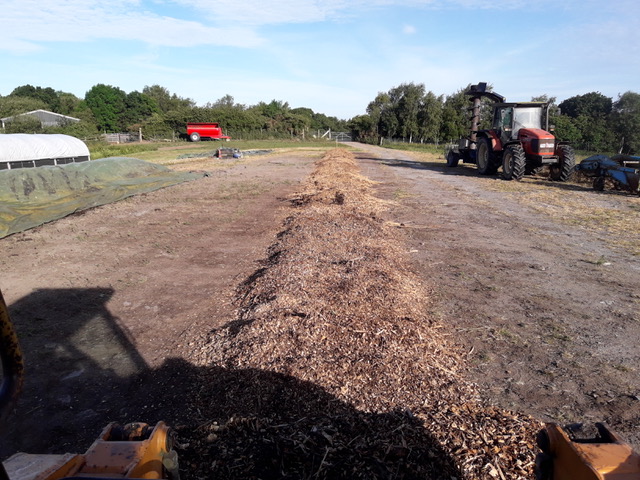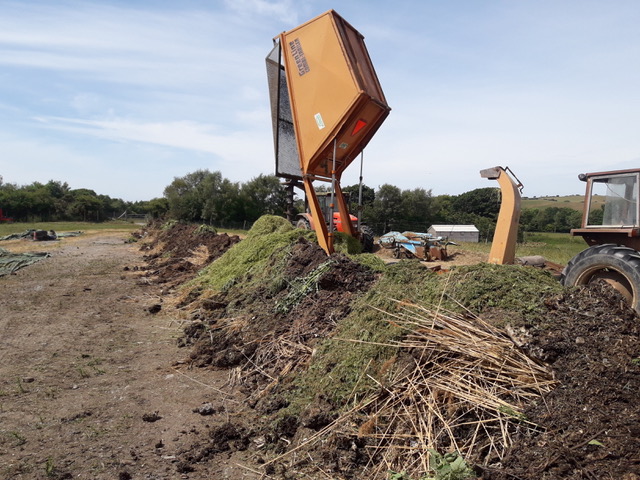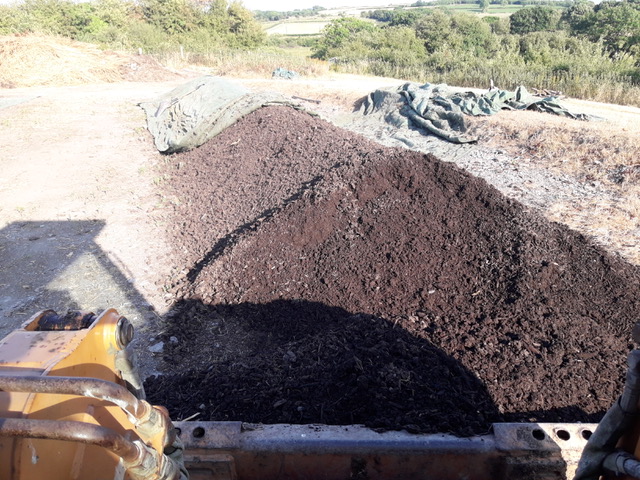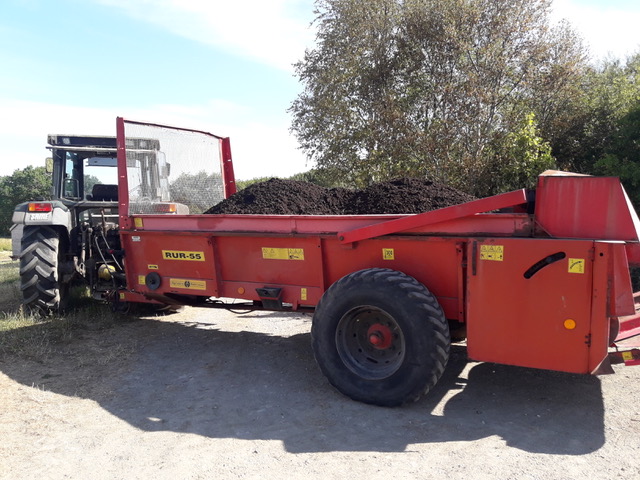liz findlay - wales, uk
Having made static piles of compost for years Liz felt that it was not enough, so she decided to start aerobic composting and become one of our trialists. It was a huge investment in terms of resources (buying the compost turner) but they have been encouraged with the results.
Liz Findlay has a 30ac holding that she farms with her son Oliver. They keep poultry and produce fruit and vegetables in polytunnels. They also have 50ac of land by the coast where they grow grain for the poultry and field scale vegetables for the local market. They also run pasture fed beef and sheep there.
The compost windrows are 2.5m x 50m max. Materials composted are:
nitrogen:
Green from polytunnels and fields (courgette tops, bean tops, green leaves etc)
Poultry muck from mobile sheds (50% grass diet and 50% wheat/pea/oat diet)
Horse muck with imported bark peelings stripped from pine trees grown in the Ystwyth valley and processed at local sawmill
Docks, thistles, nettles and grass cut and collected from poultry fields with mini direct cut forage harvester.
carbon:
Woodchip from hedgelaying (hawthorn, blackthorn, willow, hazel, ash and alder) which are chipped using greenmech machine before being added to the compost. Whilst these are not usually recommended as they take a long time to break down, Liz felt that the high nitrogen levels in the poultry muck would counterbalance them.
Oat straw - home grown from chick/pullet rearing shed mixed with poultry muck.
Waste/recycled cardboard from egg packing.
The windrows are innoculated with either biodynamic preps - 500 + 502,503,504,505,506,507 or Luebke inoculant of microorganisms.
They are turned when they reach 65C and initially this can be 3 times in 24hr for the initial 2 – 3 day period. Then twice a day for 1 week and then settles to once a day for about 3 weeks and then once a week to 5 - 6 weeks when they leave it to “mature”. It is then spread as needed from about 10 weeks onwards. It is spread as thinly as possible (approx. 0.5 t /ac) with a Zetor RUR55 on the fields and in the tunnels.
Generally Liz has found that growth of vegetables has improved and also that the health of her poultry has improved. Despite there not having been any scientific tests to prove the benefits to poultry she feels that they scratch there for the extra acis/proteins/sugars/enzymes.
,




